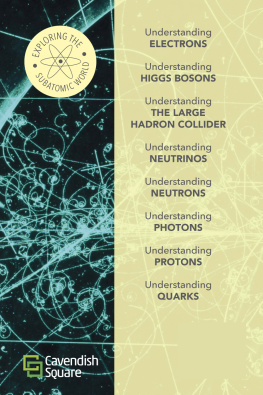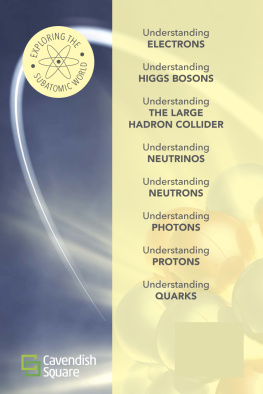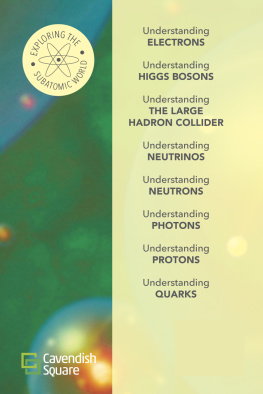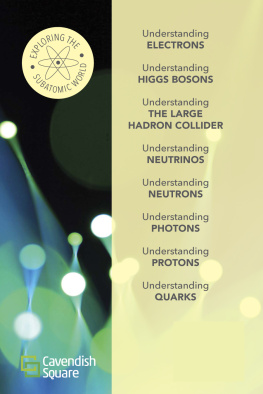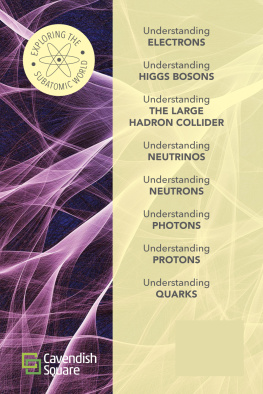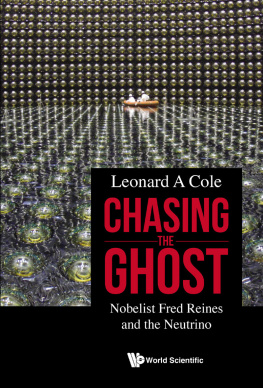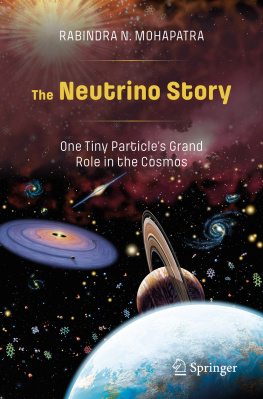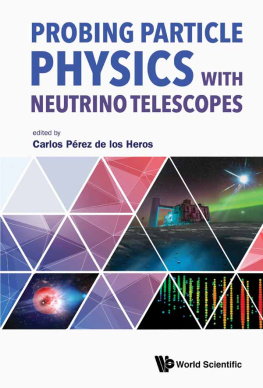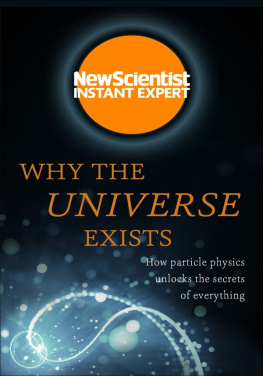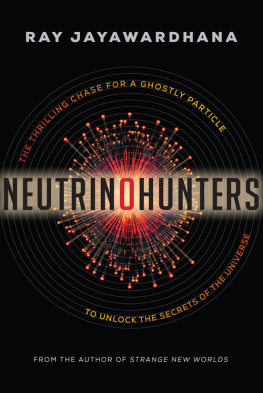B. H. Fields - Understanding Neutrinos
Here you can read online B. H. Fields - Understanding Neutrinos full text of the book (entire story) in english for free. Download pdf and epub, get meaning, cover and reviews about this ebook. year: 2015, publisher: Cavendish Square Publishing, LLC, genre: Art. Description of the work, (preface) as well as reviews are available. Best literature library LitArk.com created for fans of good reading and offers a wide selection of genres:
Romance novel
Science fiction
Adventure
Detective
Science
History
Home and family
Prose
Art
Politics
Computer
Non-fiction
Religion
Business
Children
Humor
Choose a favorite category and find really read worthwhile books. Enjoy immersion in the world of imagination, feel the emotions of the characters or learn something new for yourself, make an fascinating discovery.
- Book:Understanding Neutrinos
- Author:
- Publisher:Cavendish Square Publishing, LLC
- Genre:
- Year:2015
- Rating:3 / 5
- Favourites:Add to favourites
- Your mark:
- 60
- 1
- 2
- 3
- 4
- 5
Understanding Neutrinos: summary, description and annotation
We offer to read an annotation, description, summary or preface (depends on what the author of the book "Understanding Neutrinos" wrote himself). If you haven't found the necessary information about the book — write in the comments, we will try to find it.
Readers will explore the history of the discovery and the properties of the neutrino, one of the smallest subatomic particles.
Understanding Neutrinos — read online for free the complete book (whole text) full work
Below is the text of the book, divided by pages. System saving the place of the last page read, allows you to conveniently read the book "Understanding Neutrinos" online for free, without having to search again every time where you left off. Put a bookmark, and you can go to the page where you finished reading at any time.
Font size:
Interval:
Bookmark:


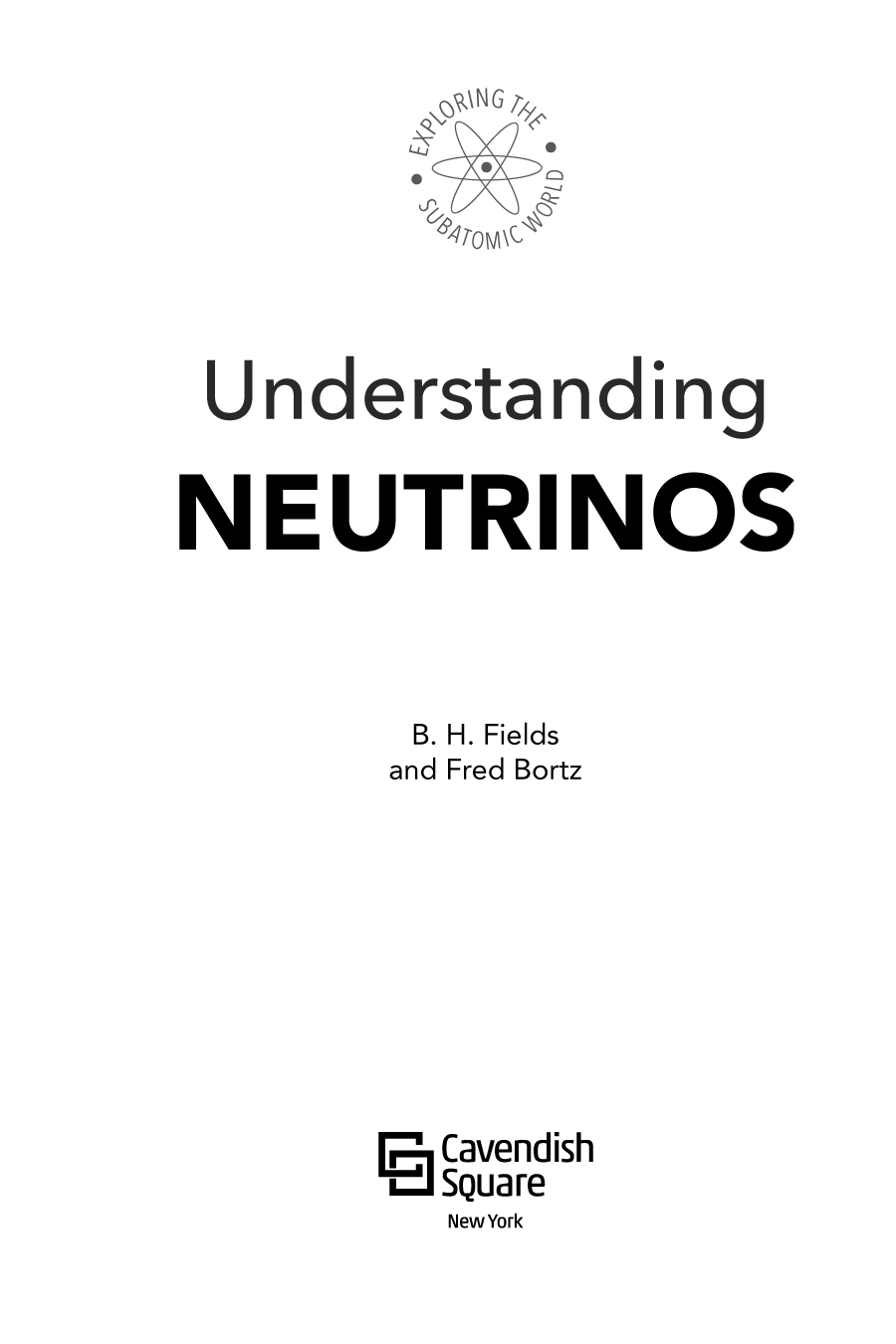
To my classmate, friend, and world-class neutrino-catcher, Professor Lawrence R. Sulak
Published in 2016 by Cavendish Square Publishing, LLC
243 5th Avenue, Suite 136, New York, NY 10016
Copyright 2016 by Cavendish Square Publishing, LLC
First Edition
No part of this publication may be reproduced, stored in a retrieval system, or transmitted in any form or by any meanselectronic, mechanical, photocopying, recording, or otherwisewithout the prior permission of the copyright owner. Request for permission should be addressed to Permissions, Cavendish Square Publishing, 243 5th Avenue, Suite 136, New York, NY 10016. Tel (877) 980-4450; fax (877) 980-4454.
Website: cavendishsq.com
This publication represents the opinions and views of the author based on his or her personal experience, knowledge, and research. The information in this book serves as a general guide only. The author and publisher have used their best efforts in preparing this book and disclaim liability rising directly or indirectly from the use and application of this book.
CPSIA Compliance Information: Batch #WS15CSQ
All websites were available and accurate when this book was sent to press.
Library of Congress Cataloging-in-Publication Data
Fields, B. H.
Understanding neutrinos / by B. H. Fields and Fred Bortz.
p. cm. (Exploring the subatomic world)
Includes index.
ISBN 978-1-50260-540-5 (hardcover) ISBN 978-1-50260-541-2 (ebook)
1. Neutrinos Juvenile literature. 2. Particles (Nuclear physics) Juvenile literature. I. Fields,
B. H. II. Title.
QC793.5.N42 F48 2016
539.7215d23
Editorial Director: David McNamara
Editor: Andrew Coddington
Copy Editor: Cynthia Roby
Art Director: Jeffrey Talbot
Designer: Stephanie Flecha
Senior Production Manager: Jennifer Ryder-Talbot
Production Editor: Renni Johnson
Photo Research: J8 Media
The photographs in this book are used by permission and through the courtesy of: DeAgostini/ Getty Images, cover; maralova/Shutterstock.com, throughout; By Loon, J. van (Johannes), ca. 1611-1686. (http://nla.gov.au/nla.map-nk10241) Public domain, via Wikimedia Commons, 7; Dr. Longs copy of Cassini/File:Cassini apparent.jpg/Wikimedia Commons, 8; Nicku/ Shutterstock.com, 9; Thomas Forget, 10; Paul Nadar, Public domain/File:Portrait of Antoine-Henri Becquerel.jpg via Wikimedia Commons, 15; SSPL/Getty Images, 17; By Bain News Service, publisher, Public domain/File:Ernest Rutherford 1908.jpg via Wikimedia Commons, 20; Thomas Forget, 22, 23; Encyclopaedia Britannica/UIG/Getty Images, 24; Science & Society Picture Library/Getty Images, 26; Ann Ronan Pictures/Print Collector/Getty Images, 29; Thomas Forget, 30, 33; Fermi National Accelerator Laboratory/Science Source/ Getty Images, 35; Max-Planck Institute, courtesy AIP Emilio Segre Visual Archives, 36; Jiu/ Imaginechina/AP Images, 38; Research Laboratory of Electronics/Greg Hren Photography, 41; Thomas Forget, 42; Science Source, 45; AIP Emilio Segre Visual Archives, 48; Thomas Forget, 50; Courtesy of the SNO+ Collaboration, 51; Thomas Forget, 52; NASA, ESA, M.J. Jee and H. Ford (Johns Hopkins University) File:CL0024+17.jpg/Wikimedia Commons, 54.
Printed in the United States of America
Contents
Matter and the Forces of Nature
Neutrinos Save the Day
Neutrino Number Two and the Particle Zoo
A Universe of Neutrinos
T his is the story of a kind of subatomic particle that you have probably never heard about. Yet it is more numerous by far than the ones you probably know. It is called the neutrino, Italian for little neutral one. Neutrinos speed through space, pass through matter, and rarely leave a trace. Still, on the rare occasions that we dectect them, they tell a remarkable story.
That story begins with facts you probably have learned in school. Every substance is made of atoms, and atoms are made of smaller subatomic particles called protons, neutrons, and electrons. Protons and neutrons carry most of the atoms mass and make up its central region, called the nucleus. Electrons are much lighter. You may have been told that the electrons orbit the nucleus like planets orbit the sun. Thats a useful way to view an atom, but, as you will discover, it is not exactly correct. And that is only the beginning of the story.
Besides those three kinds of subatomic particles, there are many others that are not found in matter as you are used to thinking about it. The neutrino is one of those other particles. In the chapters ahead, you will discover that neutrinos carry no electric charge, have very little mass, and are very hard to detect. Yet understanding neutrinos is essential to make sense of the entire subatomic world.
Although neutrinos are not contained within atoms, they are created within them. They come out of a nucleus during one kind of radioactive decay. They also emerge when heavy subatomic particles transform into lighter ones, or when nuclei merge together in a process called fusion. Fusion fuels the stars. Stars not only produce light and heat, but they also send vast numbers of neutrinos streaming outward.
Billions of neutrinos zip through your body every second without affecting it at all. In fact most neutrinos that reach Earth pass through without interacting with even a single atom. It takes careful scientific work to detect those few that do. In fact, it took about twenty-five years from the time physicists (scientists who study matter and energy) first realized that neutrinos were necessary in natures scheme of things until a team of researchers identified them in a nuclear reactor.
To understand neutrinos, you first need to understand atoms and their parts, especially the nucleus and the phenomenon of radioactivity. The nucleus was discovered little more than a century ago, and physicists are still exploring the forces within it. This book follows the path of discovery from the nucleus to the modern limits of particle physicswhere nearly massless, uncharged, barely detectable sprites known as neutrinos turn out to reveal the deepest secrets of the universe.
MATTER
and the Forces of Nature
P hysics is a mathematical science. When people hear or read that, they immediately think about equations or formulas. Those formulas often arise from patterns that physicists see in natural phenomena. Then they look for fundamental principles underlying those patterns.
The process often goes like this: At first, a pattern seems complex. Then someone discovers a new viewpoint from which things appears to be simpler. That viewpoint often leads to important discoveries about the laws that govern nature. Although this book will eventually take you to unfamiliar forces deep within atoms, it begins with a force you experience all the time: gravity.
The Universe According to Ptolemy. The second-century Greek-born Egyptian mathematician and astronomer Ptolemy observed and described the motion of the Sun, Moon, stars, and planets in several important texts. It was natural, though incorrect, for people of that time to view Earth as the center of all motion, as shown in this illustration based on Ptolemys writings.
Font size:
Interval:
Bookmark:
Similar books «Understanding Neutrinos»
Look at similar books to Understanding Neutrinos. We have selected literature similar in name and meaning in the hope of providing readers with more options to find new, interesting, not yet read works.
Discussion, reviews of the book Understanding Neutrinos and just readers' own opinions. Leave your comments, write what you think about the work, its meaning or the main characters. Specify what exactly you liked and what you didn't like, and why you think so.

